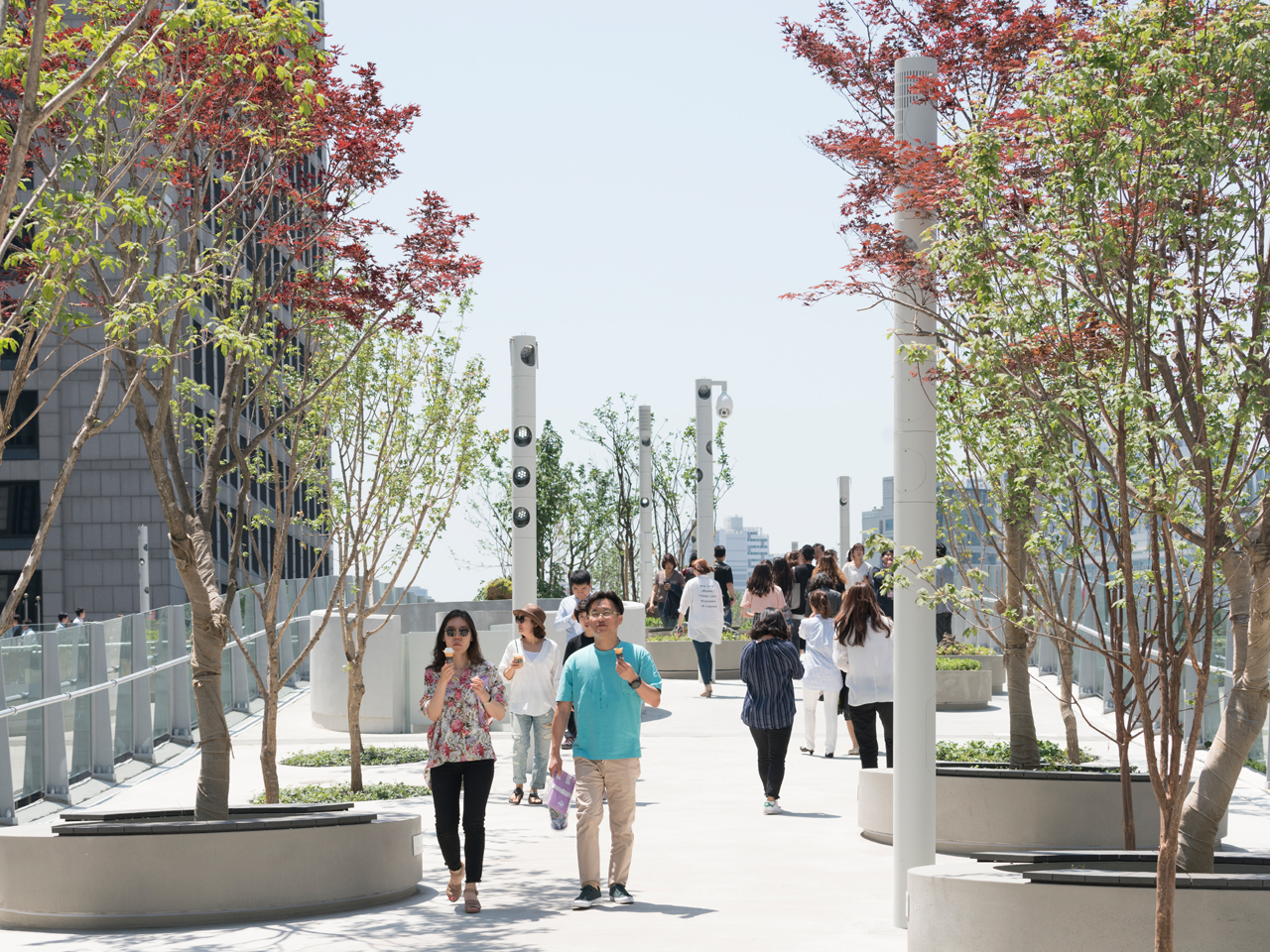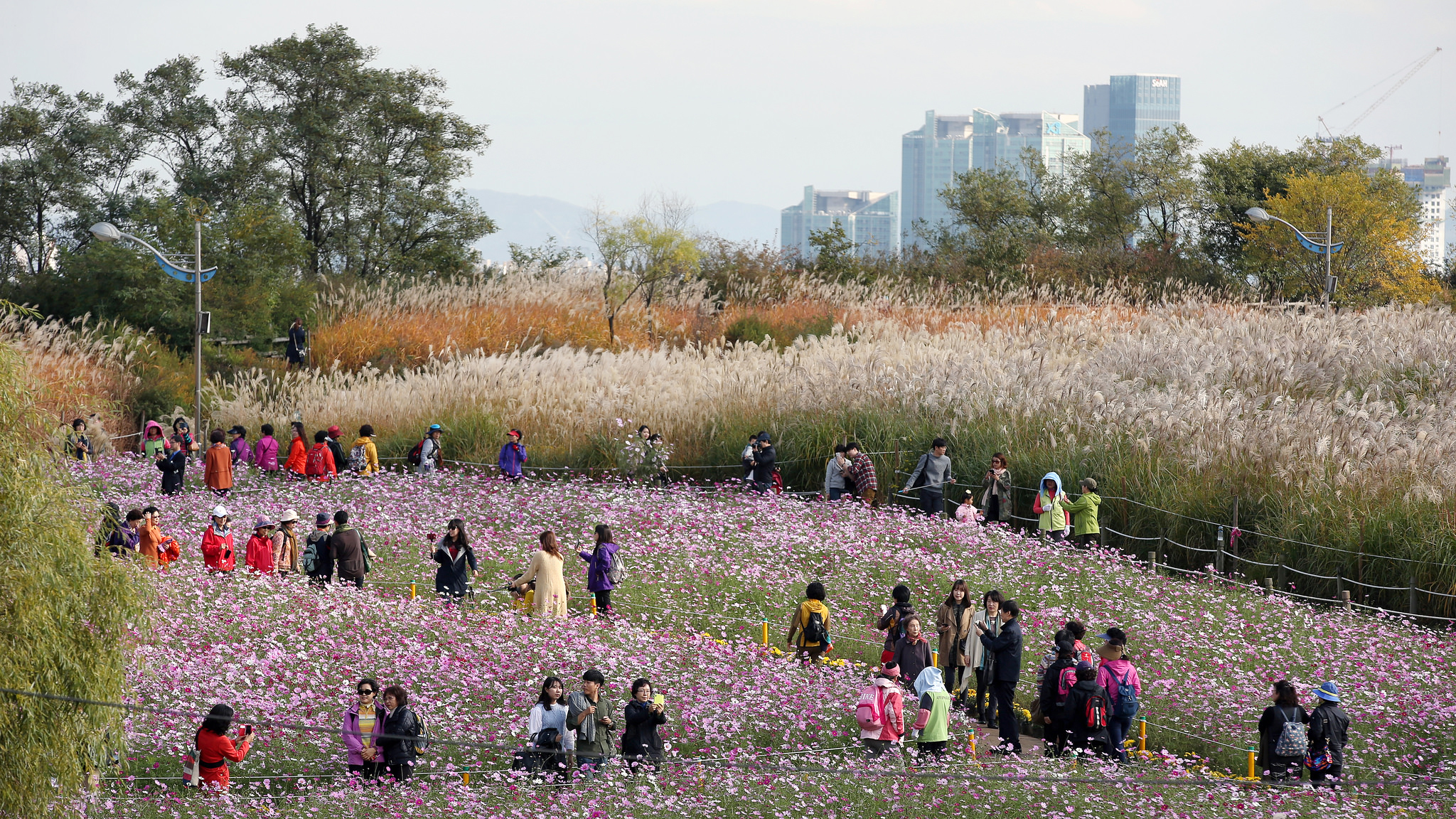An Overhead “Sky Garden” Comes To Seoul
The city of Seoul, South Korea will soon have its own High Line, an equivalent to the iconic elevated park in New York City. The Seoul Skygarden will open in April on the city’s since abandoned largest overpass, designed by the Dutch architecture firm MVRDV.
“Due to the scale of the Seoul Station Overpass which was built for vehicle traffic, an opportunity exists to create a unique public space in the heart of Seoul,” MVRDV said in a statement about the project. The overpass was first built in the 1970s for vehicles to easily cross from one end of the city to the other. But in 2006, the city determined that the freeway was unsafe, and it has been closed since, with plans to demolish and rebuild it thereafter falling by the wayside. Instead, the city more recently decided to take a different turn, abandoning the idea of building a new a vehicle highway altogether, in favor of creating a pedestrian walkway that doubles as a public park.
A Skygarden will be comprised of path of 24,000 plants and trees organized in alphabetical order and arranged into different “neighborhoods” based on their names in the Korean alphabet. And there’s an educational aspect to the project as well: each plant will be labeled, and ideally, pedestrians will be able to learn about the different types of plants from South Korea on their walk across the pathway. The trees alone cost $530,000 dollars, and the Seoul Metropolitan Government, who is funding the project, will spend $33 million dollars in total in course of building the Skygarden. Much like New York’s High Line, the passageway will also include cafes, flower shops, street markets, libraries, a sun deck, and greenhouses.
Seoul’s Skygarden was first announced in 2014 by Seoul Mayor Park Won-soon. That year, in a public speech, he highlighted the urgent need to implement environmental protection in the city. “I believe that now is the time for us to break away from uniform plans for urbanization that are based on destruction and construction and the building of concrete roads and structures and pursue a plan for ‘new urbanization,’” he said. Won-soon defined a “new urbanization” as an initiative that places Climate Change and energy independence front and center to urban development.
Seoul is one of the most notable Eastern metropolises hit particularly hard by urban pollution. Since the 1980s and up until the early 2000s, a visible layer of smog hovered over the city.
Seoul is one of the cities hit particularly hard by urban pollution. Since the 1980s and up until the early 2000s, a visible layer of smog hovered over the city, Won-soon said in his speech. Currently, the Seoul Metropolitan Government has plans for and is implementing several different initiatives to reduce the pollution, such as revamping old diesel vehicles to reduce exhaust and introducing green and electric cars. In August, the government announced plans to limit the number of old diesel vehicles in order to decrease air pollution.
MVRDV’s plans for the future developments of the Skygarden are even more ambitious. There will be a second floor, elevators, and stairs, as well as “satellite” gardens that grow from projected steel rods attached to the primary structure. These rods will support hanging plants and almost look like branches, forming a bridge between the overpass and the street below.
A non-governmental group Gogawalking, who has already organized community events on the walkway, will maintain the garden once it’s complete. Illustrations of the plan of this passageway convey a scene resemblant of a surreal landscape or a fairy tale (above). Huge trees of pastel pinks and greens fill the walkway while flowers hang from the highway like chandeliers. “At night, you will walk through a flood of blue light,” MVRDV co-founder Winy Maas said of the project last November, “as if you’re walking in a cosmos, and all the plants will be lit as if they are the stars– which, they are.”





































